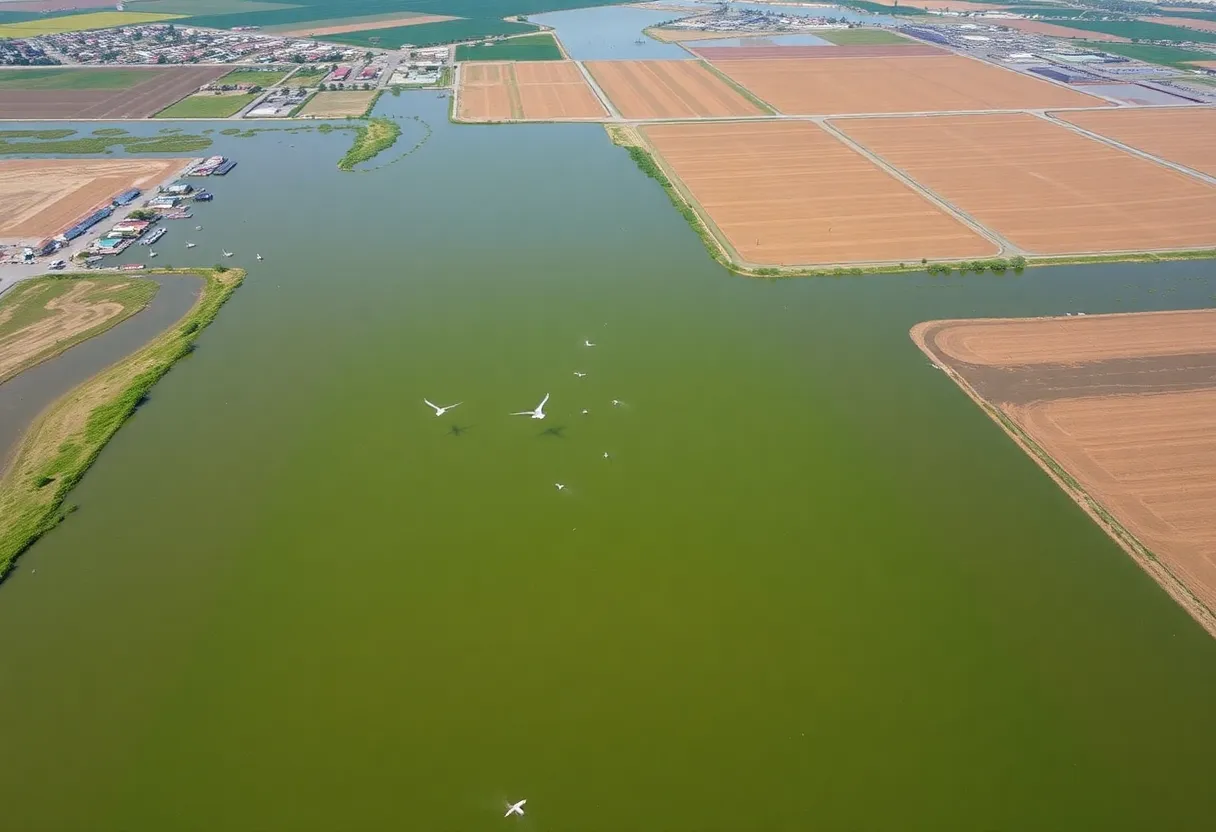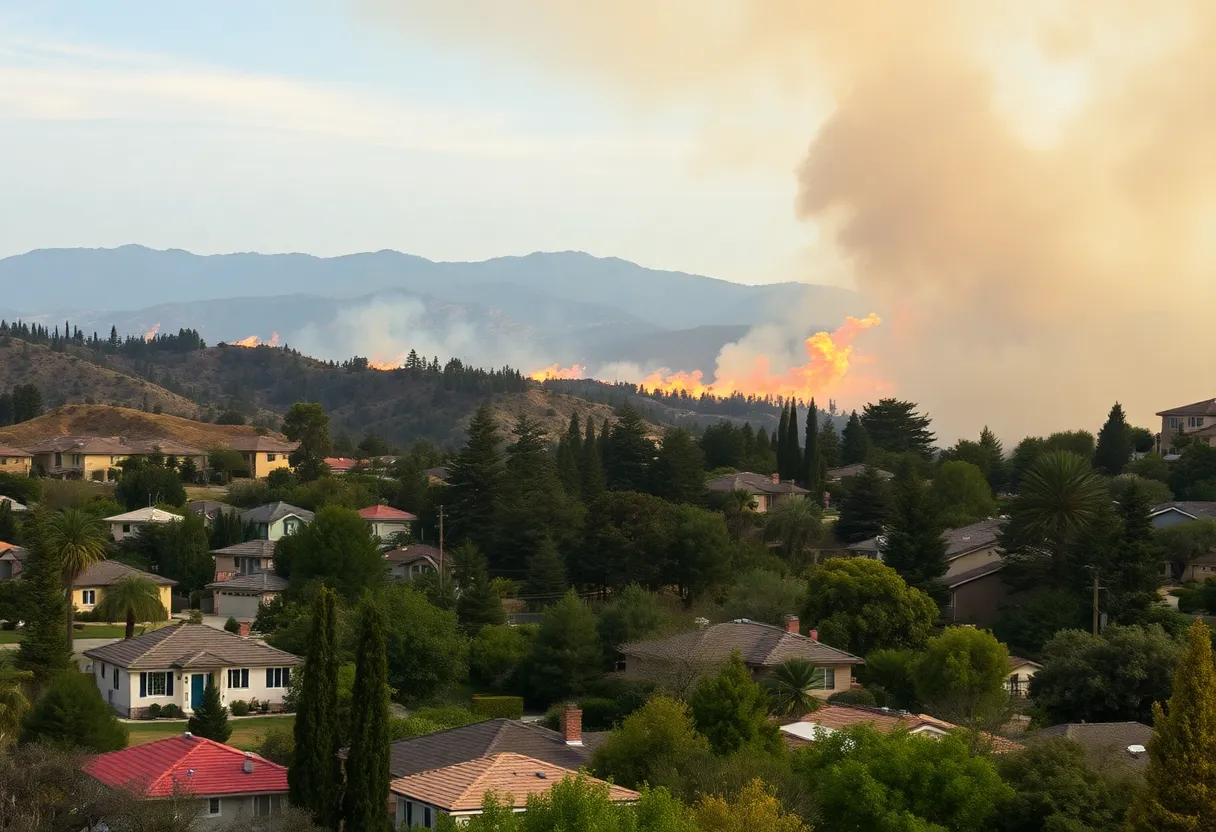News Summary
Tulare Lake, once the largest freshwater body west of the Mississippi, is making a historic comeback after 130 years of disappearance. Driven by recent storms and snowmelt, the lake revived in 2023, flooding farmland but also revitalizing local wildlife and Tachi Yokut tribal traditions. As of March 2024, the lake remains uncertain, facing challenges from climate change and agricultural impacts.
California has witnessed a remarkable environmental transformation with the dramatic resurgence of Tulare Lake, a significant body of freshwater that had largely vanished over 130 years ago due to agricultural drainage and land reclamation. This revival marks a notable chapter in the region’s ecological history, as the lake, once the largest of its kind west of the Mississippi River, began its comeback in 2023 following an onslaught of atmospheric rivers and notable snowmelt.
Historically, at its peak in the late 19th century, Tulare Lake measured over 100 miles long and 30 miles wide, creating a vast ecosystem that supported both local wildlife and human activities. The Tachi Yokut tribe, who referred to the lake as “Pa’ashi,” relied heavily on it for sustenance, using its resources for traditional hunting and fishing practices. The lake not only sustained the tribe but also supported commercial steamship travel from Bakersfield to San Francisco, facilitating trade and transport.
The lake’s disappearance began in the late 1850s, driven by state policies that prioritized land reclamation for agriculture and the extensive development of man-made irrigation systems. By 1890, the first complete disappearance of Tulare Lake had taken place. This loss irrevocably altered the region’s ecosystem and significantly reduced local biodiversity.
Fast forward to 2023, a series of intense storms and significant snowmelt contributed to the revival of Tulare Lake. The lake’s resurgence submerged over 94,000 acres of farmland and, at its zenith in 2023, covered approximately 120,000 acres—a breathtaking return to an ecological state not seen in over a century.
This resurgence brought not only environmental benefits but also challenges. The return of Tulare Lake led to the revival of local wildlife, including migratory birds, fish, and amphibians that had diminished with the lake’s earlier disappearance. Additionally, the Tachi Yokut tribe engaged in cultural ceremonies and resumed traditional hunting and fishing activities, revitalizing their connection to the lake and its resources.
However, the flooding caused by the lake’s return has severely impacted local agricultural workers and landowners, causing significant damage to homes and properties. As the lake continues to fluctuate, experts have raised concerns about its long-term sustainability and the implications of climate change. Predictions suggest that extreme weather conditions may lead to increases in the frequency of large-scale flooding events, complicating water management strategies that have historically governed the area.
Recent scrutiny of historical water management practices has come into play as experts and stakeholders reassess the implications of Tulare Lake’s revival. While such fluctuations are not unprecedented—the lake has resurfaced multiple times throughout history, notably in the 1930s, 1960s, and 1980s—its current state prompts serious questions about the balance between agricultural needs and ecological restoration.
As of March 2024, Tulare Lake’s area had diminished to about 2,625 acres, prompting concerns about another potential disappearance. Given the lake’s historical patterns and the ongoing effects of climate change, the future of Tulare Lake remains uncertain. Ongoing monitoring and adaptive strategies will be essential to navigate the complexities of water management in California’s San Joaquin Valley.
Deeper Dive: News & Info About This Topic
- NDTV: Tulare Lake Returns
- Wikipedia: Tulare Lake
- Indy100: Tulare Lake 2024
- Google Search: Tulare Lake
- LiveMint: Tulare Lake Resurfaces
- Google Scholar: Tulare Lake
- Earth.com: Ghost Lake Tulare
- Encyclopedia Britannica: Tulare Lake
- MSN: California’s Tulare Lake Resurfaces
- Google News: Tulare Lake

Author: Anaheim Staff Writer
The Anaheim Staff Writer represents the experienced team at HEREAnaheim.com, your go-to source for actionable local news and information in Anaheim, Orange County, and beyond. Specializing in "news you can use," we cover essential topics like product reviews for personal and business needs, local business directories, politics, real estate trends, neighborhood insights, and state news affecting the area—with deep expertise drawn from years of dedicated reporting and strong community input, including local press releases and business updates. We deliver top reporting on high-value events such as major conventions at the Anaheim Convention Center, including NAMM and VidCon, exciting games at Angel Stadium and Honda Center, and developments at Disneyland Resort Our coverage extends to key organizations like the Anaheim Chamber of Commerce and Visit Anaheim, plus leading businesses in hospitality, entertainment, and innovation that power the local economy As part of the broader HERE network, including HERECostaMesa.com, HEREHuntingtonBeach.com, HERESantaAna.com, and HERELosAngeles.com, we provide comprehensive, credible insights into Southern California's dynamic landscape.




